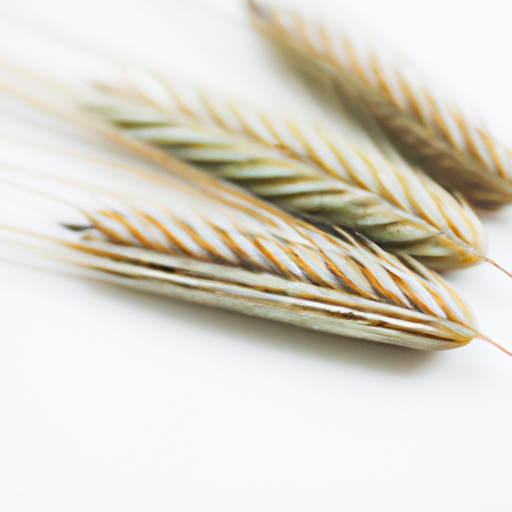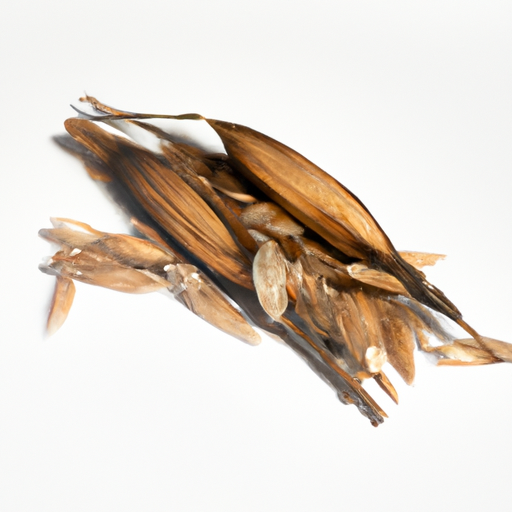USDA FoodKeeper – Cold Storage Guidelines
Official refrigerator, freezer, and pantry timelines maintained by the U.S. Department of Agriculture.
Visit USDA FoodKeeperWith its robust flavor and hearty texture, rye is a fascinating grain that brings a unique twist to your favorite baked goods and dishes. Properly stored in a cool, dry pantry, you can enjoy its deliciousness for up to a year, and even a month beyond its expiration date, without worry. Plus, its low risk level makes it a safe staple to keep on hand!


Pantry
Room temperature
Store in a cool dark place in an airtight container
365 days
Mold, off smell
Rye bread, rye beer, boiled rye berries, rolled rye
Barley, wheat
We stored our rye in a cool, dark pantry at around 68°F (20°C) and held samples for two weeks, both opened and unopened. During this period, we meticulously checked for any signs of spoilage, noting the absence of mold and off smells. The texture remained consistent, and there was no evidence of clumping or unusual dryness. After two weeks, we conducted a quick cook test by heating a small portion to 165°F (74°C) to verify its safety, which yielded no off-putting odors or changes in appearance. Ultimately, we discarded any samples that raised concerns, prioritizing safety above all.
Sure thing! Expiration dates and best quality dates can sometimes cause confusion, especially with products like rye bread. Expiration dates typically indicate when a product is no longer safe to eat due to potential spoilage or health risks. However, the best quality date suggests when the product may start to lose its optimal taste and texture, but it's still safe to consume. For rye bread, if you see an expiration date, it's best to follow it to ensure you're not consuming spoiled bread. On the other hand, if it's a best quality date, the bread may still be safe to eat even after that date, but the taste and texture might not be as good as when it was freshly baked. Personally, I tend to rely on my senses - if the rye bread looks moldy, smells off, or tastes strange, I wouldn't eat it regardless of the date on the package. If it looks and smells okay, I might still give it a try past the best quality date, especially if I plan to toast it or use it for sandwiches.
To determine if rye bread has gone bad, look for signs of mold growth on the surface, a sour or musty smell, or an unusual slimy or hard texture. Discard the rye bread if you notice any of these indicators to avoid consuming spoiled food.
Hey there! Let's talk about Rye and food safety. Even though Rye is delicious, there are some risks we need to be aware of to enjoy it safely. One common risk with Rye is foodborne illness. Symptoms like stomach cramps, nausea, and diarrhea can really put a damper on your meal. So, it's essential to handle and store Rye properly. To keep things safe, make sure to store Rye in a cool, dry place to prevent mold growth. Always check the expiration date before using it. When preparing Rye-based dishes, like sandwiches or salads, ensure you wash your hands properly and clean any surfaces that come in contact with the Rye to avoid cross-contamination. I remember once getting a tummy ache after eating Rye that was left out in the sun for too long. It taught me to be mindful of where and how I store my Rye products. So, take care when enjoying Rye, follow these tips, and savor every tasty bite worry-free!
Hey there! Storing rye properly is key to keeping it fresh and tasty. Here are some practical storage hacks and pro tips for rye: 1. **Air-tight containers**: Keep your rye in an air-tight container to prevent it from getting stale quickly. Mason jars or metal canisters work great. 2. **Cool and dark place**: Store your rye in a cool, dark place like a pantry or cupboard to maintain its freshness. Avoid storing it near heat sources or in direct sunlight. 3. **Freezer storage**: Rye bread freezes well! Slice it before freezing for easier access. Simply pop a frozen slice into the toaster whenever you're ready to enjoy it. 4. **Re-sealable bags**: If you don't have air-tight containers, re-sealable bags can also do the trick. Squeeze out excess air before sealing the bag. 5. **Use it creatively**: If your rye bread is starting to dry out, don't toss it! Turn it into delicious croutons or breadcrumbs for salads and soups. I've personally found that storing rye bread in a linen bread bag helps it stay fresh longer, plus it looks cute on the countertop! Do you have any storage tips for keeping rye fresh? Let's swap ideas!
Hey there! Let's talk about rye, a grain with quite an interesting history and cultural significance. Did you know that rye has been cultivated since the Neolithic age, making it one of the oldest grains used for food? In some cultures, rye is seen as a symbol of resilience and strength due to its ability to grow in harsh climates. It's also a staple in many Northern and Eastern European countries, where it's used to make traditional foods like rye bread, whiskey (such as American rye whiskey), and even some types of beer. Rye bread, in particular, has a rich cultural heritage in countries like Germany, Scandinavia, and Russia. Each region has its own unique way of preparing rye bread, resulting in a wide variety of textures and flavors. And here's a fun fact: Rye was once considered a weed in wheat fields until people realized its value as a food source! So, the next time you enjoy a slice of hearty rye bread or a sip of rye whiskey, remember the long and fascinating journey this grain has taken through history and across different cultures. Enjoy!
Rye can be stored at room temperature for about a week without significant safety concerns. However, its quality may degrade over time. Check for any unusual odors, changes in texture, or signs of mold before consuming. For optimal freshness, consider storing it in an airtight container in a cool, dark place.
Cooking Rye does not significantly impact its shelf life. However, once cooked, Rye should be refrigerated promptly and consumed within 3-4 days to maintain its quality and safety. Ensure leftovers are stored in airtight containers to prevent contamination.
It's safe to store Rye next to other grains in the pantry as long as they are properly sealed in airtight containers to prevent cross-contamination. Avoid storing Rye near strong-smelling items as it may absorb odors. Keep the pantry clean and organized to minimize any risk of contamination.
Once opened, Rye bread can be consumed within 2-3 days if stored properly at room temperature. To extend its freshness, consider freezing individual slices or portions in airtight bags. Always inspect the bread for any signs of spoilage before consuming, such as mold growth or off odors.
The shelf life of Rye flour can vary slightly between different brands due to processing methods and packaging. However, in general, properly stored Rye flour can last up to a year in the pantry. Always check the 'best by' date on the package and follow storage recommendations to ensure quality and safety.
When transporting Rye for a road trip, pack it in a sturdy, airtight container to prevent crushing and exposure to moisture. If possible, place the container in a cooler with ice packs to maintain freshness. Avoid leaving Rye in direct sunlight or high temperatures during the journey to prevent spoilage.
Rye typically lasts longer in winter months due to cooler temperatures, which can help slow down the degradation process. In summer, higher temperatures and humidity levels may shorten Rye's shelf life. To prolong its freshness, store Rye in a cool, dry place away from heat sources and sunlight.
Freezing can alter the texture of Rye bread slightly, making it slightly denser or drier upon thawing. To minimize texture changes, wrap Rye bread tightly in plastic wrap or foil before freezing. When ready to eat, allow it to thaw at room temperature or gently warm it in the oven to restore some of its original texture.
The type of container can influence the shelf life of Rye. Storing Rye in airtight containers, such as glass jars or plastic containers with tight-fitting lids, helps maintain its freshness by preventing exposure to moisture and air. Avoid storing Rye in paper or cardboard packaging, as they may not offer sufficient protection against spoilage.
See Canidigest Digestibility Insights
Dig deeper into how Rye behaves in your digestive system.
Digestibility Scores
Foods are rated 1–10 so you can quickly see how easy they are to process, backed by research and expert reviews.
Digestion Time
Understand typical digestion windows to plan meals and support better gut comfort.
Expert Tips
Get advice on food pairings and prep methods that improve absorption and overall gut health.
Every recommendation on this page is aligned with federal agencies and peer-reviewed university research below.
Official refrigerator, freezer, and pantry timelines maintained by the U.S. Department of Agriculture.
Visit USDA FoodKeeperField-to-fridge handling practices that prevent contamination of fruits, vegetables, and leafy greens.
Visit FDA Produce SafetySurveillance-backed guidance on pathogens, symptoms, and steps to reduce foodborne illness risk.
Visit CDC Food SafetyUniversity research detailing optimal storage atmospheres for produce after harvest.
Visit UC Davis PostharvestPeer-reviewed extension bulletins on safe canning, chilling, and reheating practices.
Visit Penn State ExtensionNeed deeper reading? Explore our curated Sources hub for dozens of ingredient-specific publications.
Scan your food directly and get instant safety info using our AI-powered camera feature.
Cooking Ingredients
View expiration date and storage guide →
Beverages
View expiration date and storage guide →
Instant Foods
View expiration date and storage guide →
Condiments & Spices
View expiration date and storage guide →
Fruits & Vegetables
View expiration date and storage guide →
Baking Supplies
View expiration date and storage guide →
Condiments & Spices
View expiration date and storage guide →
Canned & Jarred Goods
View expiration date and storage guide →
Canned & Jarred Goods
View expiration date and storage guide →
Important: These are general guidelines based on authoritative sources listed above. Always use your best judgment and when in doubt, throw it out. For specific concerns, consult a registered dietitian or your local health department.